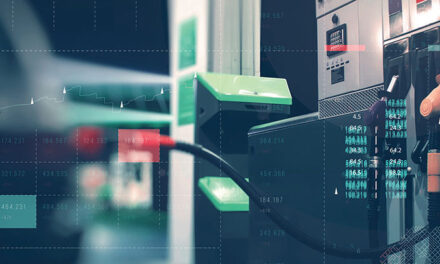
Electric Highway Coast-To-Coast EV Charging Stations

Electric Highway – Coast-To-Coast EV Charging Stations
By Angela Altass
Petro-Canada, a Suncor business, took on the challenge of building a coast-to-coast network of 50 electric vehicle (EV) charging stations in 2019 and added additional sites to its’ Electric Highway in 2020.
“With more than 100,000 electric vehicles on the road in Canada and an average of 4,000 EVs added each month, we know that this is an important step in meeting the current and future driving needs of Canadians,” says Mark Little, president and chief executive officer, Suncor. “We want to be part of the total solution to meet energy demand and reduce the carbon footprint of the transportation system. Canada’s Electric Highway is one of the ways we are able to support the total solution.”
The Electric Highway extends from Victoria, British Columbia to Stewiacke, Nova Scotia allowing Canadians who have embraced electric vehicles a means to travel across the country with peace of mind that they will be able to charge their vehicles along the way.
“To build a network of this size in one year was an ambitious goal,” says Pat Lazenby, project manager, Petro-Canada’s EV network. “The first charger on the Electric Highway opened in Milton, Ontario in January 2019 with the final stop on the highway opening in Victoria, B.C. in December 2019. In 2020, we added 10 additional sites to better connect the communities along the highway.”
Most of the Electric Highway stations were opened at existing Petro-Canada retail locations close to the TransCanada Highway. A charging station was also built on an A&W stand-along restaurant in Kenora, Ontario while another station was located at a municipal town hall in Marathon, Ontario.
“It was great to work with these partners, which helped us to achieve our goal of having the chargers located less than 250 kilometers from each other,” says Lazenby, explaining that a key factor in determining locations for the chargers was ensuring all sites were within a reachable distance from each other. “We did this because the majority of EV’s can hold battery for this distance and it allows EV drivers to comfortably drive the highway from coast-to-coast without range concerns.”
Lazenby describes completing the Electric Highway as an exciting step forward.
“In addition to serving the needs of our customers today, our approach to our marketing and distribution business also includes evaluating those evolving needs in the future,” states Lazenby. “We can see that the landscape of fueling is evolving when it comes to low carbon fuel alternatives, particularly as governments at all levels are looking to support the transition to a lower carbon economy. This combined with the growing number of electric vehicles available on the market and the mix of mobility options led us to look at alternatives that would fit our customer’s needs. Through our Petro-Canada brand we have the ability to learn more about the emerging EV market and customers in this space.”
Petro-Canada was also aware of some of the challenge’s drivers are facing with respect to electric charging infrastructure across the country.
“We knew that we could make a difference by combining our top tier national network and service with this technology,” says Lazenby. “Each station is equipped with 1-2 DCFC fast chargers (level three, direct current fast charge) that have both CCS and ChadeMO connectors to serve most varieties of electric cars. A few stations also offer a level two charger, which has a J1772 connector. The Petro-Canada EV app identifies which chargers are available at each station.”
Each site required a high level of coordination with numerous groups, including local utilities, governments, construction and engineering crews.
“Completing the highway also required a little bit of luck in the weather department,” notes Lazenby. “Completing more than 50 different locations across the country in one year was a challenge but we are proud of the work from our team and all the support from the communities.”
Different levels of government were involved in the planning and building of the Electric Highway and the completion of the project was supported in part through $4.6 million in funding from the Government of Canada’s Electric Vehicle and Alternative Fuel Infrastructure Deployment Initiative.
“We also received great reception from different municipal and provincial governments,” says Lazenby. “For example, the Town of Marathon, Ontario was so excited with the initiative, they provided their town hall as the location for our Marathon charger station.”
Travelers can visit the Petro-Canada.ca website to learn more about the network and locations where they can charge their electric vehicles or they can download the Petro-Canada app, which is available for both iPhone and Android phones.
“The app provides directions and status updates on the chargers to help you plan your trips,” says Lazenby. “With the app, you are also able to start and monitor your charging sessions, making it easy to use while you take advantage of the amenities on site. Pricing information can be found in the app as well. We price our chargers by minute of use, which ranges from 20 to 33 cents per minute, depending on the province.”
Lazenby says feedback overall has been very positive to the Electric Highway and Petro-Canada is happy with the engagement and usage of the charging locations so far, adding that they expect to see the numbers climb as more drivers make the switch to electric vehicles and current EV drivers get back out on the roads.
“While the COVID-19 pandemic is contributing to lower than expected usage of the chargers, we built the network with the future in mind,” says Lazenby. “There are always new insights to be gained and we are already seeing some great trends in the usage of the Electric Highway, with more people being able to make long drives in their EVs and some regular guests charging multiple times at their favourite locations.”
 Petro-Canada has embraced the challenge of providing consumers who are looking for choices for low carbon fuel alternatives with options.
Petro-Canada has embraced the challenge of providing consumers who are looking for choices for low carbon fuel alternatives with options.
“We have heard from EV drivers about how much they appreciate the wide network that allows them to travel further without having to worry about finding a charger and for non-EV drivers we’ve heard that the Electric Highway helps them when making the decision on whether to buy an electric car,” says Lazenby. “We have also received lots of feedback from guests asking when a charger is coming to their communities. We are still learning as well, so we value the feedback from our guests if there is an issue with a charger or if there is anything that we can do differently.”
A wide range of usage is being seen across the network, says Lazenby.
“We are noticing the highest usage in areas that have higher concentrations of EV drivers, such as British Columbia, Southern Ontario and Quebec,” says Lazenby. “However, we’ve also noticed that even some of our more remote locations are getting daily use, understanding that we might be the only DC fast charger in those areas. We’ve even had a few drivers indicate they took a long EV road trip that they could not have previously completed without our network.’
Higher demand for electric vehicle chargers is expected in the future.
“With respect to future EV usage in Canada, there are several factors that lead us to expect increasing demand for EV charging for the foreseeable future,” says Lazenby. “Some of these factors include a growing variety of vehicle choices for consumers, purchase incentives and the recent zero-emission mandates announced by various levels of government. Our focus right now is on learning more from our current sites, which includes focusing on the reliability and the customer experience at the charger and in the application. We are always monitoring to see where a new charging station would further connect drivers and their communities.”
The charging stations feature DC fast chargers with both ChadeMO and CCS/SAE connectors, which support most EVs. The chargers provide maximum power up to 100kW (CHAdeMO) and 350kW (CCS) at most locations– enough to provide an 80 per cent charge or more to most EVs in less than 30 minutes. Lazenby also anticipates improvements to come regarding electric vehicles, including a reduction in charging times, as battery technology advances.
Suncor and Petro-Canada have expressed a commitment to working with all levels of government to support the transition to a low carbon economy and provide Canadians with fuel choices.
“Zero emission vehicles are critical to our clean energy future and to combatting climate change,” says Seamus O’Regan, Canada’s Minister of Natural Resources. “Our government is supporting initiatives like Petro-Canada’s coast to coast network of EV fast chargers, putting more electric vehicles on our roads, reducing pollution and creating stronger and more sustainable communities.”





































